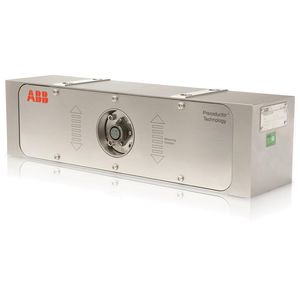
- Detection - Measurement
- Force Measurements
- Tension load cell
- ABB Measurement & Analytics
- Company
- Products
- Catalogs
- Projects
- News & Trends
- Exhibitions
Tension load cell PFTL201 beam type

Add to favorites
Compare this product
Characteristics
- Type
- tension
- Form
- beam type
- Rated force
10 kN, 20 kN, 50 kN
- Rated load
2,250 lb, 4,500 lb, 11,250 lb
(1,020.58 kg, 2,041.17 kg, 5,102.91 kg)
Description
In many strip processes, the strip tension inherently produces a horizontal force component on a roll... or, by design, it can be made to do so.
Using this horizontal force component to measure strip tension can be highly advantageous. The load cell can be sized to measure just the strip tension, excluding the tare weight of the roll. The result is optimized measurement accuracy.
Another advantage is that ABB’s unique horizontal load cell – specifically designed to measure this force component – provides stiffness levels and overload tolerances in all force directions that are significantly greater than what can be achieved with vertical load cells.
The first Pressductor transducer was developed in Västerås, Sweden, in the early 1950's and patented in 1954.
ABB's well-known Pressductor® Technology is a measurement principle based on the magnetoelastic effect - the magnetic properties of a material are influenced by the mechanical force applied to it.
When exposed to mechanical force, ABB's Pressductor transducer produces measurement signals as a result of changes in magnetic fields. (Move your mouse over the illustration to see these changes.) Because these signals are not contingent upon physical movement or deformation, the load cells combine sensitivity with extraordinary tolerance to overloads and virtually no built-in limit to the number of load cycles.
The ABB Pressductor transducers produces high-power, low-impedance AC signals that are very resistant to electrical interference and earth faults.
Catalogs
No catalogs are available for this product.
See all of ABB Measurement & Analytics‘s catalogsOther ABB Measurement & Analytics products
Web Tension Measurement
*Prices are pre-tax. They exclude delivery charges and customs duties and do not include additional charges for installation or activation options. Prices are indicative only and may vary by country, with changes to the cost of raw materials and exchange rates.







